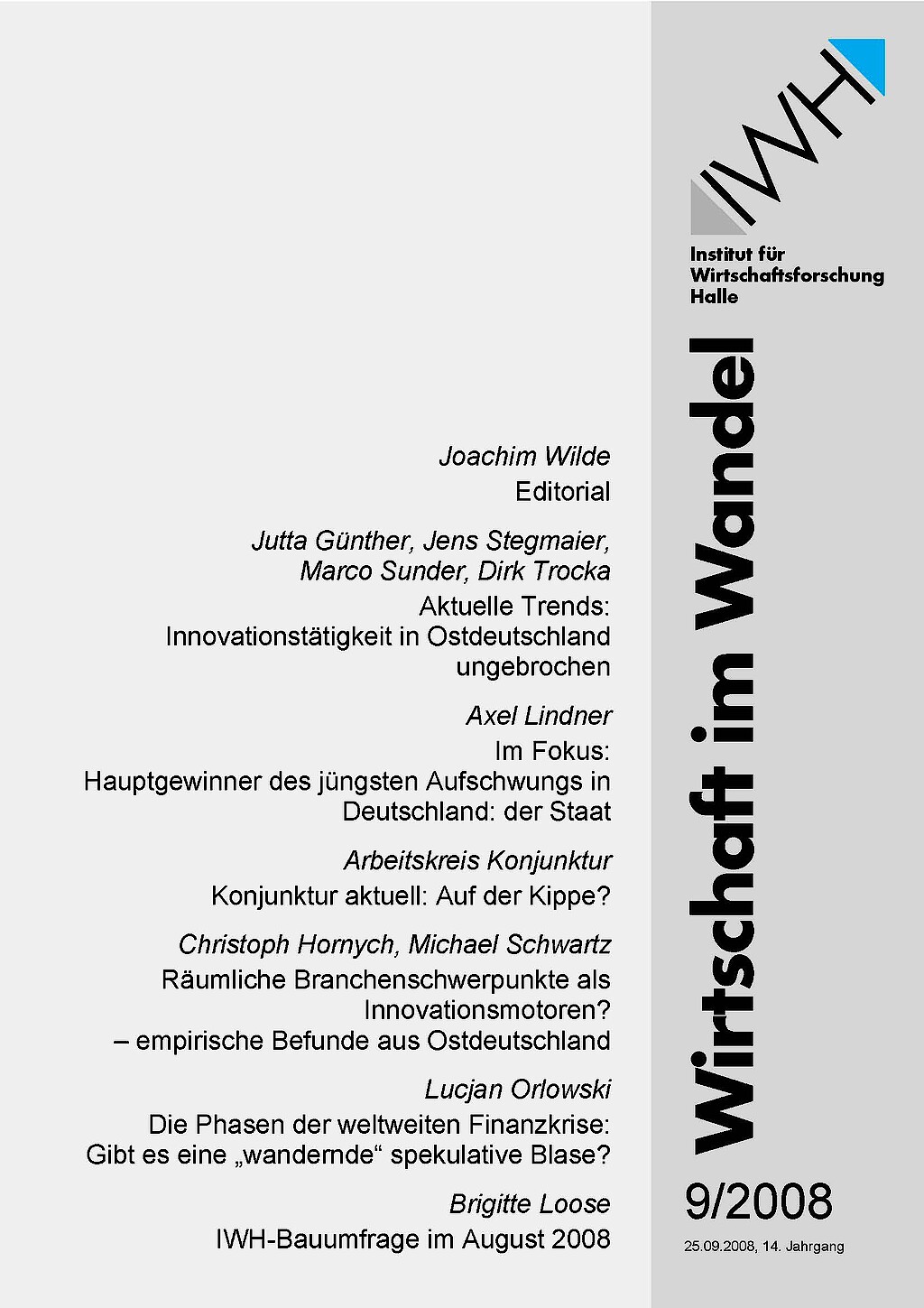
Spatially Concentrated Industries as Innovation Driver? – Empirical Evidence from East Germany
Sowohl in regionalökonomischen Theorien als auch in der wirtschaftspolitischen Praxis wird häufig von einem positiven Zusammenhang zwischen der regionalen Konzentration von Akteuren einer Branche und der Innovationsfähigkeit dieser Akteure ausgegangen. Vor diesem Hintergrund verspricht man sich von einer Förderung entsprechender Ballungen Effekte auf die technologische Leistungsfähigkeit von Regionen. Eng damit verknüpft ist die Diskussion über mögliche Vorteile der öffentlichen Förderung von Clusterstrukturen und somit von „Leuchttürmen“ anstelle der Verteilung von Fördermitteln nach dem „Gießkannenprinzip“. Bisherige empirische Überprüfungen ergeben allerdings kein konsistentes Bild bezüglich der Evidenz der vermuteten Wirkungszusammenhänge. Der vorliegende Beitrag überprüft für ostdeutsche Regionen, ob von der räumlichen Ballung Effekte auf den Innovationsprozess ausgehen. Hierzu werden regionale Branchenschwerpunkte identifiziert und in die Schätzung einer regionalen „Wissensproduktionsfunktion“ einbezogen. Es zeigt sich, dass von den identifizierten Branchenschwerpunkten – entgegen den Erwartungen – ein negativer Einfluss auf die Patentaktivitäten ausgeht. Positive Effekte gehen hingegen von außeruniversitären Forschungseinrichtungen aus. Zudem konnten Hinweise auf die Wirkung intersektoraler Wissens-Spillovers gefunden werden. Die Ergebnisse zeigen, dass Effekte, die aus der Ballung von Akteuren verschiedener Branchen resultieren (Urbanisierungseffekte), eine höhere Bedeutung für das regionale Innovationsgeschehen besitzen als Effekte, die aus der Ballung von Akteuren einer Branche resultieren (Lokalisationseffekte). Räumliche Branchenschwerpunkte in Ostdeutschland sind hiernach (bislang noch) keine Innovationsmotoren.




